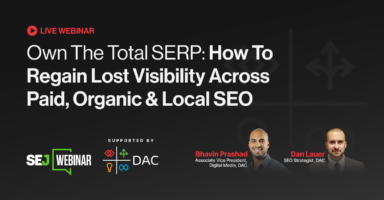Hreflang Tags: Hints for Google, Not Directives
Google Search Advocate John Mueller recently clarified how Google interprets hreflang tags, emphasizing they are hints, not directives. This clarification came during a discussion with SEO professional Neil McCarthy, who noticed pages intended for Belgian French (fr-be) users appearing in French search results.
French-Belgian Pages Appearing in French Search Results
McCarthy observed pages targeting Belgian French users showing up in French searches. Google's explanation highlighted that the results contained the search terms, were in French, and seemed relevant even if typically shown outside France.
Google's Stance on Hreflang
Mueller explained that hreflang tags don't guarantee indexing of all variations. When variations are similar, like fr-fr and fr-be, Google often chooses one as canonical.
“hreflang doesn’t guarantee indexing… if they are the same (eg fr-fr, fr-be), it’s common that one is chosen as canonical.”
He further added that Google simplifies things for sites with the "same language." While hreflang might deliver the correct variant, reporting often consolidates under the canonical URL.
“I suspect this is a 'same language' case where our systems just try to simplify things for sites. Often hreflang will still swap out the URL, but reporting will be on the canonical URL.”
Key Takeaways for International SEO
- Hreflang as Hints: Google uses hreflang as a suggestion, not a requirement, for regional URLs.
- Canonical Tags Override: Similar pages may have one chosen as canonical, impacting indexing and reporting.
- Same-Language Simplification: Google might group pages sharing the same language, even with hreflang.
Optimizing Your International SEO Strategy
Make each regional page unique. Distinct content reduces the chance of Google grouping them under one canonical URL.
Verify the canonical URL in Google Search Console. Don't rely solely on hreflang for separate performance data.
Test with VPNs or location-based tools. Ensure the correct pages appear for your target audience in different locations.
Review Google's documentation on hreflang, sitemaps, and HTTP headers. Hreflang works best with a strong site structure.
Actionable Steps for Marketers
- Audit Hreflang: Check tag syntax, sitemaps, and HTTP headers.
- Review Page Similarity: Ensure each language-region version offers unique value.
- Monitor Performance: Track traffic and regional performance for unexpected changes.
Understanding hreflang's limitations and Google's approach to canonicalization allows for realistic international SEO strategies. Regular testing, accurate localization, and consistent monitoring are crucial for successful regional campaigns.








